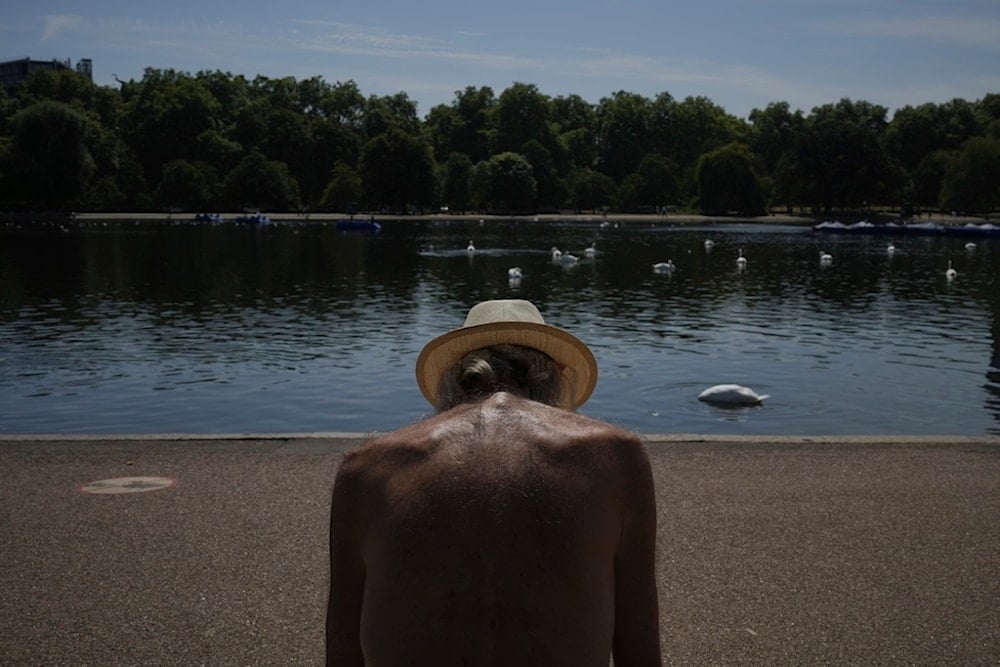World capitals face escalating heat threat, warns new analysis
A new IIED report reveals a sharp global rise in extreme heat days across major capital cities, warning that without urgent adaptation, millions, especially the urban poor, will face increasingly dangerous living conditions.
-

A man sits in the sun at a park in London as parts of the United Kingdom face a heat wave Monday, August 11, 2025. (AP Photo/Kin Cheung)
A recent assessment published by the International Institute for Environment and Development (IIED) found that the world's most populous capital cities are now grappling with a staggering rise in extremely hot days, with temperatures exceeding 35°C becoming significantly more frequent since the 1990s.
According to the report, 43 major capitals experienced an average of 1,335 such days annually between 2015 and 2024, compared to just 1,062 per year from 1994 to 2003. The trend is global, with cities like Rome and Beijing seeing their hot days double, while Manila recorded a threefold increase. In Madrid, annual days over 35°C surged from 25 to 47. Even traditionally temperate cities such as London are being affected, now registering twice as many days over 30°C.
Speaking to The Guardian, IIED researcher Anna Walnycki noted, "Global temperatures are rising faster than governments probably expected and definitely faster than they seem to be reacting." Without swift adaptation, she notes, millions living in urban centers will face intensifying dangers, especially due to the heat-trapping nature of cities.
The urban poor are disproportionately affected, Walnycki stressed, regardless of location. "The poorest people will likely suffer the most whether they're in London, Luanda or Lima, but the impacts will be significantly worse in low-income or unplanned communities in the global south thanks to lower-quality housing," she said.
"Climate change is the new reality. Governments can't keep their heads buried in the sand any more."
Cities Under Fire
The findings arrive as the climate crisis, driven by ongoing fossil fuel emissions, continues to produce record-breaking temperatures worldwide. Japan reached a new national high of 41.2°C in July 2024, sending over 10,000 people to hospitals. In Europe, an estimated 16,500 people died due to extreme heat over the summer months. Meanwhile, cities such as Shanghai and Dallas are increasingly confronting chaotic shifts between intense heatwaves and torrential rainfall, a phenomenon described as "climate whiplash."
The data, which includes 40 of the world's most populated capitals along with three politically significant cities, shows drastic changes even in places that were once relatively cool. For instance, Brasilia, which had only three days above 35°C in the 1990s, now sees around 40 such days each year. In Pretoria, South Africa, the number jumped from three to eleven.
Heat Emergency
To respond to the crisis, the Global Center on Adaptation has introduced a campaign titled The Heat is On, aiming to accelerate the implementation of life-saving initiatives, such as shaded public zones, climate-resilient work routines, and cooling centers.
"Extreme heat is not a distant risk – it is here now, threatening our people, our economies and our future," said Macky Sall, GCA chair and former president of Senegal. "By investing in practical, proven solutions, we can protect our citizens."
Read more: Study links Iberian wildfires to climate change, 40x higher risk
Yet in places like the UK, governmental responses have been criticized as fragmented and insufficient. In April, official climate advisors described current heat-preparedness efforts as "inadequate, piecemeal and disjointed."
Walnycki concluded with a stark reminder: "Many of us know what it's like to lie awake at night dripping sweat during a heatwave. This isn't a problem we can simply air-condition our way out of. Cities need an immediate funding boost to improve insulation and ventilation of buildings, develop heat plans and create shade cover where possible."

 4 Min Read
4 Min Read









